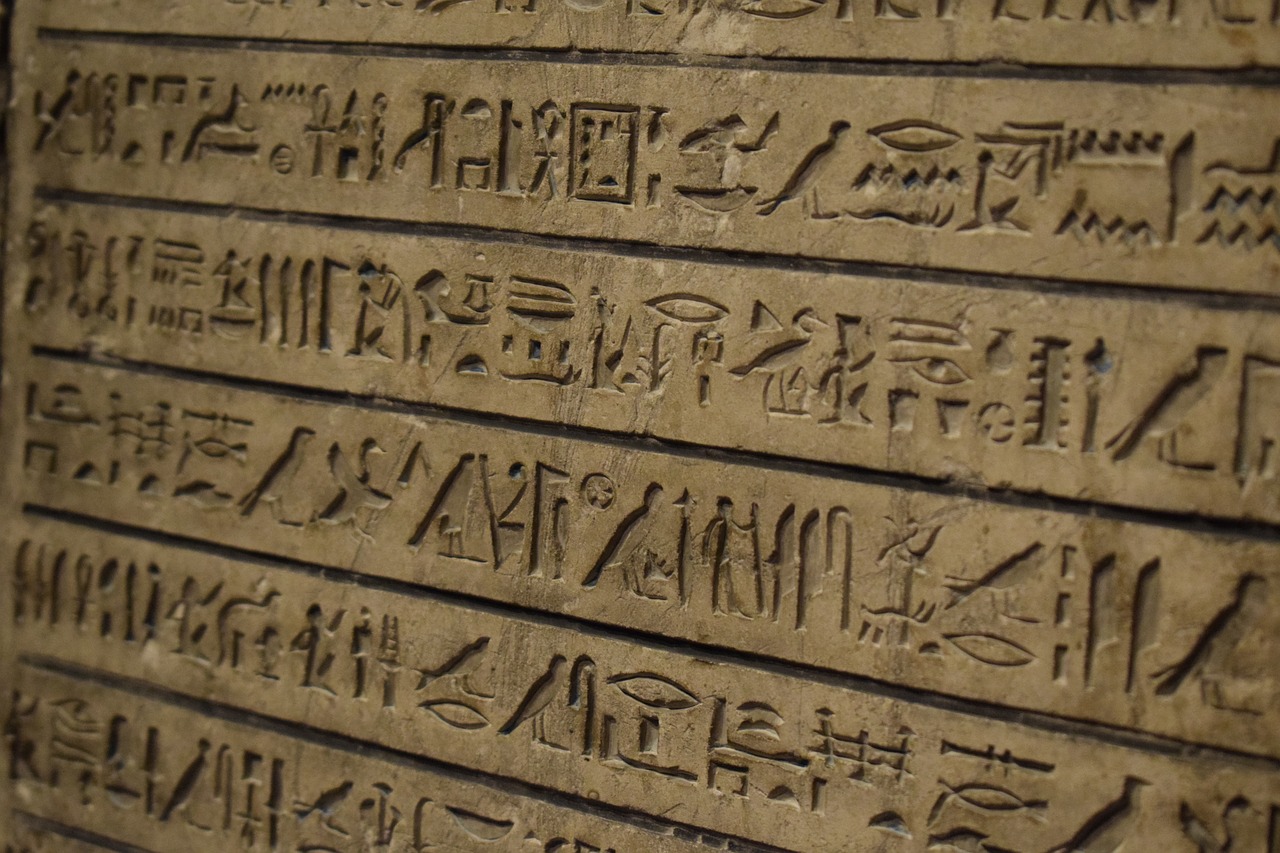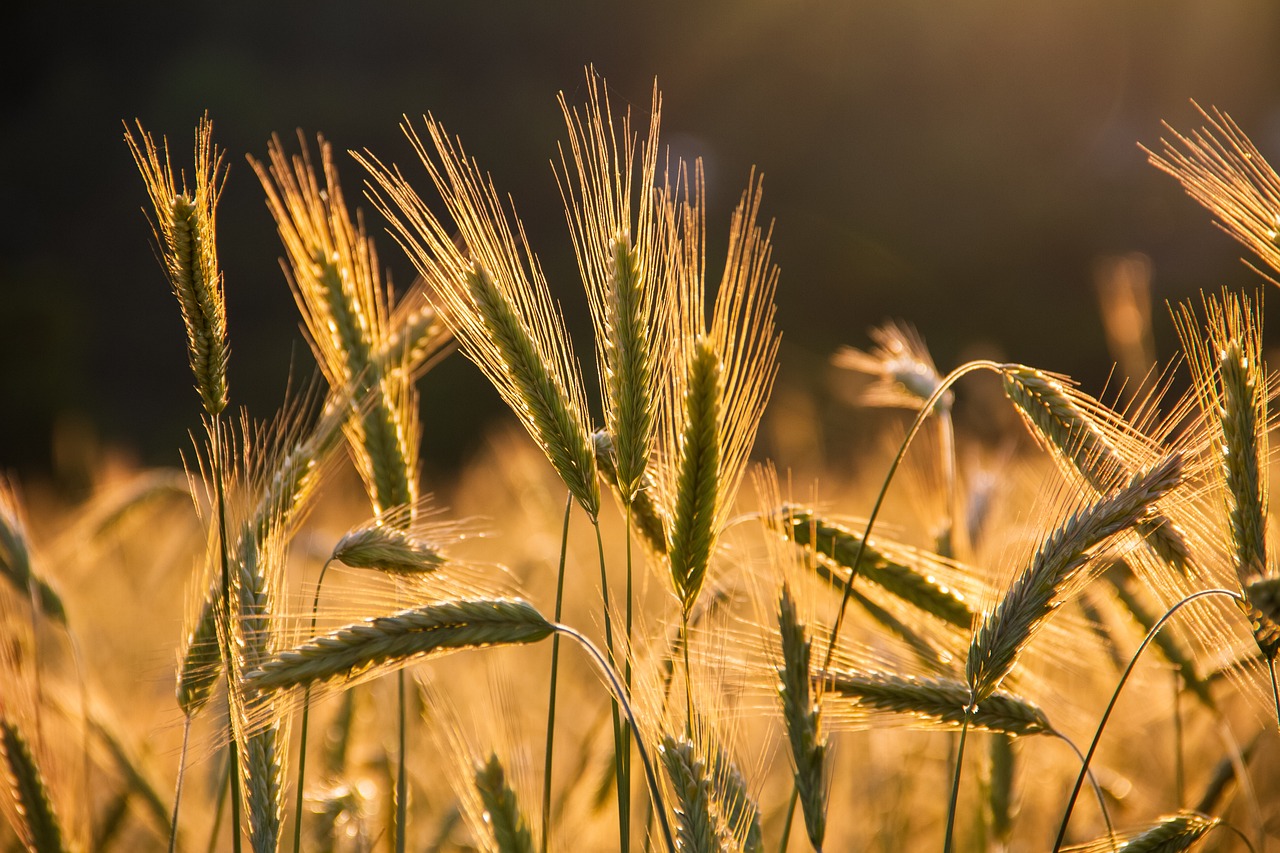The Secrets of Ancient Egyptian Agriculture
Ancient Egyptian agriculture holds within its sands a treasure trove of secrets, revealing a civilization's deep-rooted connection to the land and the ingenuity that sustained it. The fertile Nile River valley, once the cradle of one of the world's most advanced agricultural systems, bore witness to the remarkable farming techniques honed by the ancient Egyptians.
Amidst the arid landscape, the ancient Egyptians mastered the art of irrigation, utilizing the life-giving waters of the Nile with precision. The shaduf, a simple yet effective device, exemplified their resourcefulness in drawing water for crops. Crop rotation, a practice still valued today, ensured the replenishment of nutrients in the soil, while the cultivation of staples like wheat, barley, and flax laid the foundation of their agricultural prowess.
The Nile River, revered as the lifeblood of ancient Egypt, played a pivotal role in sustaining agriculture. Its annual floods brought fertile silt that enriched the soil, nurturing bountiful harvests. The Egyptians engineered intricate irrigation systems, comprising canals and reservoirs, harnessing the river's flow to quench the thirst of their crops.
Embracing a diverse array of crops, from emmer wheat to flax for linen production, the ancient Egyptians showcased their agricultural diversity. Beyond sustenance, certain plants held symbolic significance, weaving a tapestry of cultural meaning into the fabric of their farming practices.
Tools of the trade, such as plows and sickles, were wielded with precision by farmers, while animals like oxen labored alongside them in the fields. Agricultural festivals, steeped in religious fervor, celebrated the cycles of sowing and harvest, honoring deities linked to fertility and abundance.
Surplus crops found refuge in granaries, ensuring food security for the populace and supporting trade networks that spanned the ancient world. The enduring legacy of ancient Egyptian agriculture reverberates through the annals of history, offering insights into sustainable practices and lessons that transcend time.

Ancient Egyptian Farming Techniques
Exploring the innovative farming techniques and practices utilized by the ancient Egyptians, showcasing their mastery of irrigation, crop cultivation, and agricultural sustainability in the arid Nile River valley.
Ancient Egyptian farming techniques were truly remarkable, demonstrating their advanced understanding of agriculture in a challenging environment. One of the distinctive methods employed by the ancient Egyptians was the use of the shaduf, a simple yet effective tool used for irrigation. This device allowed farmers to lift water from the Nile River and distribute it to their fields, ensuring consistent moisture for their crops. Additionally, ancient Egyptians practiced crop rotation, a technique that helped maintain soil fertility and prevent depletion. They cultivated a variety of crops, including wheat, barley, and flax, showcasing their diverse agricultural knowledge and skills.

Importance of the Nile River in Agriculture
The Nile River, often referred to as the lifeblood of ancient Egypt, played a pivotal role in the agricultural practices of this civilization. Its importance cannot be overstated, as it provided the necessary resources for sustaining farming activities in an otherwise arid environment. The annual flooding of the Nile brought nutrient-rich silt to the fields, replenishing the soil and ensuring successful crop cultivation.
Moreover, the Nile River served as a natural irrigation system for the ancient Egyptians. They ingeniously developed a network of canals and reservoirs to channel the river's waters to their fields, allowing for efficient watering of crops throughout the year. This intricate system of irrigation was vital for the agricultural productivity of the region, enabling the cultivation of a variety of crops essential for sustenance and trade.

Irrigation Systems Along the Nile
Exploring the innovative farming techniques and practices utilized by the ancient Egyptians, showcasing their mastery of irrigation, crop cultivation, and agricultural sustainability in the arid Nile River valley.
Examining the unique methods employed by ancient Egyptians, such as the use of the shaduf for irrigation, crop rotation, and the cultivation of wheat, barley, and flax.
Highlighting the crucial role of the Nile River in sustaining agriculture in ancient Egypt, providing fertile soil through annual flooding and facilitating irrigation systems.
Detailing the sophisticated irrigation networks developed by the ancient Egyptians, including canals, reservoirs, and the utilization of the annual flood cycle for water distribution. The Nile River was the lifeblood of ancient Egyptian agriculture, with a complex system of irrigation channels and reservoirs that allowed for the controlled distribution of water to the fields. By harnessing the power of the annual flood cycle, the Egyptians were able to ensure consistent water supply for their crops throughout the year. This intricate network of irrigation systems was a testament to their engineering prowess and played a vital role in the success of their agricultural endeavors.
Exploring the diverse range of crops cultivated by ancient Egyptians, such as emmer wheat, barley, flax for linen production, vegetables, fruits, and the symbolic importance of certain plants.
Discussing the tools and equipment used by ancient Egyptian farmers, including plows, sickles, baskets, and the role of animals like oxen in agricultural practices.
Exploring the religious and cultural significance of agricultural festivals in ancient Egypt, such as the Festival of Sowing and Harvest, honoring deities associated with fertility and agriculture.
Detailing the methods of storing surplus crops in granaries and distributing agricultural produce throughout ancient Egyptian society, sustaining the population and supporting trade.
Reflecting on the enduring impact of ancient Egyptian agricultural practices, their contributions to global agricultural development, and lessons that can be learned for modern farming techniques.

Ancient Egyptian Crop Cultivation
Ancient Egyptian Crop Cultivation was a diverse and essential aspect of agricultural practices in ancient Egypt. The fertile lands surrounding the Nile River allowed for the cultivation of a variety of crops that sustained the population and supported the economy of the civilization.
The ancient Egyptians were adept at growing crops such as emmer wheat, barley, and flax, which were staples in their diet and economy. Emmer wheat, a hardy grain, was a primary crop that provided the necessary carbohydrates for sustenance. Barley, used for brewing beer and as a food source, was another crucial crop in ancient Egyptian agriculture. Flax, grown for its fibers used in linen production, played a significant role in the textile industry of the time.
In addition to grains and fibers, ancient Egyptians cultivated a wide array of vegetables and fruits to supplement their diet. Vegetables like onions, garlic, lettuce, and cucumbers were commonly grown, while fruits such as figs, dates, and grapes added variety to their meals. The cultivation of these crops showcased the agricultural expertise of the ancient Egyptians in maximizing the productivity of their land.
Moreover, certain plants held symbolic importance in ancient Egyptian culture and religion. The papyrus plant, for example, symbolized Lower Egypt and was used to create paper-like material for writing. The lotus flower, associated with rebirth and the sun god Ra, held spiritual significance and was often depicted in art and architecture.
Ancient Egyptian Crop Cultivation not only provided sustenance but also played a significant role in the cultural and economic fabric of the civilization. The careful selection of crops, efficient farming techniques, and reverence for the land exemplified the agricultural prowess of the ancient Egyptians.

Innovative Agricultural Tools and Equipment
Ancient Egyptian farmers utilized a variety of innovative tools and equipment to enhance their agricultural practices and ensure successful harvests. One of the essential tools was the plow, a wooden implement pulled by oxen to prepare the soil for planting. This simple yet effective tool revolutionized farming by increasing efficiency and productivity. Additionally, sickles made of bronze or flint were used for harvesting crops such as wheat, barley, and flax. These sharp cutting tools allowed farmers to gather their produce with precision and ease.
Furthermore, baskets played a crucial role in transporting harvested crops from the fields to storage facilities. These woven containers were lightweight yet durable, making them ideal for carrying various agricultural products. In addition to tools, animals like oxen were integral to ancient Egyptian agriculture. These strong beasts of burden helped plow fields, transport goods, and provide power for irrigation systems, showcasing the symbiotic relationship between humans and animals in farming.
Moreover, the ancient Egyptians were adept at crafting specialized tools for specific agricultural tasks. For instance, wooden hoes were used to break up soil and remove weeds, ensuring optimal growing conditions for crops. The utilization of such tools exemplified the Egyptians' ingenuity and dedication to maximizing agricultural output. In addition, the presence of animal-drawn carts facilitated the transportation of heavy loads across vast farmlands, streamlining the distribution of agricultural products.

Agricultural Festivals and Rituals
In ancient Egypt, agricultural festivals and rituals held significant importance in the lives of the people, intertwining religious beliefs with farming practices. One of the most prominent festivals was the Festival of Sowing, a celebration marking the beginning of the agricultural season. During this festival, farmers would perform rituals and offerings to ensure a successful planting season, seeking the blessings of deities associated with fertility and agriculture.
Similarly, the Festival of Harvest was a joyous occasion commemorating the culmination of months of hard work in the fields. It was a time of feasting, music, and dance, as the community gathered to give thanks for the bountiful harvest and express gratitude to the gods for their generosity. These festivals not only served as a means of honoring the agricultural cycle but also reinforced the spiritual connection between the people and the land they cultivated.
Moreover, agricultural rituals were deeply rooted in the belief that the success of crops was intricately linked to divine intervention. Priests and farmers would perform ceremonies to appease the gods and ensure favorable growing conditions. Offerings of food, incense, and prayers were made to deities like Osiris, Isis, and Hathor, who were revered for their roles in agricultural abundance and fertility.
These festivals and rituals were not merely ceremonial; they played a practical role in fostering a sense of community and cooperation among farmers. By coming together to celebrate the agricultural cycle, ancient Egyptians reinforced social bonds, shared knowledge and techniques, and collectively prepared for the challenges of the upcoming seasons. The festivities served as a reminder of the cyclical nature of life and the interconnectedness of all beings with the natural world.

Storage and Distribution of Agricultural Produce
Storage and distribution of agricultural produce played a vital role in ancient Egyptian society, ensuring food security and supporting trade networks. Surplus crops were carefully stored in granaries to prevent spoilage and to sustain the population during times of scarcity. These granaries were strategically located near the Nile River for easy access to water transport, facilitating the distribution of agricultural goods across different regions.
Ancient Egyptians developed sophisticated methods for storing grains such as wheat, barley, and flax. They used large storage containers made of materials like clay or mud bricks, designed to protect the crops from pests and moisture. The surplus produce stored in these granaries not only fed the local population but also served as reserves for times of drought or poor harvests.
Furthermore, the distribution of agricultural produce was a well-organized process in ancient Egypt. Trade routes along the Nile River and other waterways allowed for the transportation of goods to various cities and regions. Farmers, merchants, and traders relied on boats and barges to move commodities such as grain, vegetables, fruits, and textiles from one place to another.
The efficient distribution of agricultural goods was essential for maintaining the economy and sustaining the population. It enabled the exchange of surplus crops for other essential resources, fostering economic growth and cultural exchange within ancient Egyptian society. The careful planning and management of storage and distribution systems exemplify the advanced agricultural practices of the ancient Egyptians.

Sustainability and Legacy of Ancient Egyptian Agriculture
Ancient Egyptian agriculture stands as a testament to sustainability and innovation, leaving a lasting legacy that continues to inspire modern farming practices. The intricate techniques and practices developed by the ancient Egyptians have not only sustained their civilization but have also influenced agricultural methods worldwide.
One of the key aspects of the sustainability of ancient Egyptian agriculture was their profound understanding of the land and its resources. By harnessing the power of the Nile River through sophisticated irrigation systems, they were able to transform the arid desert landscape into fertile farmland. The annual flooding of the Nile provided rich silt deposits that replenished the soil, ensuring bountiful harvests year after year.
Moreover, the ancient Egyptians practiced crop rotation, allowing the soil to recover nutrients naturally and preventing depletion. This thoughtful approach to farming helped maintain the productivity of the land over generations, ensuring long-term sustainability.
Another significant contribution of ancient Egyptian agriculture was the development of storage and distribution systems. Surplus crops were stored in granaries to prevent wastage and ensure food security during times of scarcity. Additionally, the efficient distribution of agricultural produce throughout the kingdom supported trade networks and sustained the population.
Furthermore, the legacy of ancient Egyptian agriculture extends beyond their innovative farming practices. Their reverence for the land and its bounty is reflected in religious and cultural rituals that honored deities associated with fertility and agriculture. Festivals such as the Festival of Sowing and Harvest celebrated the cycles of nature and the importance of agriculture in sustaining life.
In conclusion, the sustainability and legacy of ancient Egyptian agriculture serve as a timeless example of harmonious coexistence with the land. By embracing the principles of stewardship, innovation, and reverence for nature, the ancient Egyptians have left a profound impact on the history of agriculture and continue to inspire generations to cultivate a sustainable future.
Frequently Asked Questions
- What were the main crops grown by ancient Egyptians?
Ancient Egyptians cultivated a variety of crops, including emmer wheat, barley, flax for linen production, vegetables, and fruits. These crops were essential for their sustenance and economic prosperity.
- How did ancient Egyptians irrigate their crops?
Ancient Egyptians utilized innovative irrigation techniques, such as the shaduf, canals, and reservoirs, to water their crops. They also took advantage of the annual flooding of the Nile River to ensure fertile soil for agriculture.
- What tools did ancient Egyptian farmers use for agriculture?
Ancient Egyptian farmers used various tools and equipment, including plows, sickles, baskets, and animals like oxen to aid in agricultural practices. These tools were crucial for efficient crop cultivation and harvesting.
- What was the significance of agricultural festivals in ancient Egypt?
Agricultural festivals in ancient Egypt held religious and cultural importance, honoring deities associated with fertility and agriculture. Festivals like the Festival of Sowing and Harvest played a vital role in celebrating and ensuring successful harvests.
- How did ancient Egyptians store and distribute their agricultural produce?
Ancient Egyptians stored surplus crops in granaries and distributed agricultural produce throughout society. This ensured food security, sustained the population, and supported trade within ancient Egyptian civilization.



















